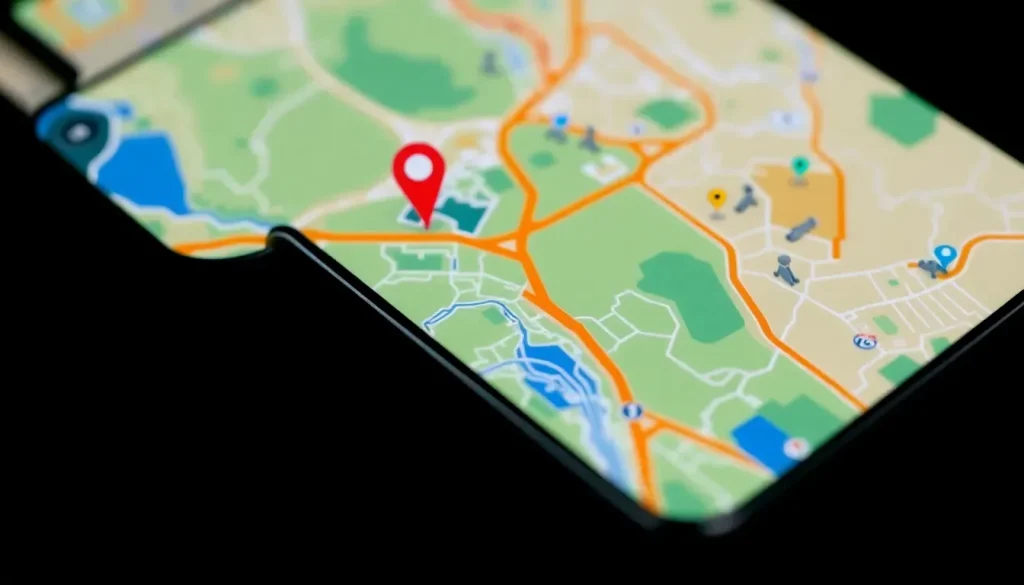Apple Maps iOS 16 upgrade enhances essential feature

Apple Maps has taken a significant leap forward with the introduction of natural language search capabilities in iOS 26, a feature that promises to transform how users interact with the navigation app. This enhancement not only makes searching more intuitive but also significantly improves user experience by allowing for more conversational queries. Let’s explore the details of this upgrade and its implications for users.
Natural language search: a game changer for Apple Maps
With the rollout of iOS 26, Apple Maps has integrated Apple Intelligence into its search functionality, which is a notable upgrade from previous versions. This AI-driven enhancement allows users to input searches in a natural, conversational tone, making the process feel more intuitive. Instead of relying on rigid keywords, users can now ask questions or make requests as they would in everyday conversation.
For instance, a user can simply type, “Find coffee shops with outdoor seating near Central Park,” and Apple Maps will accurately parse this request, returning relevant results. This shift represents a significant evolution in how mapping applications can respond to user intent, making it easier for people to find what they are looking for without having to adjust their language to fit a predefined format.
Interestingly, this feature isn’t limited to Maps alone. Apple has previously rolled out similar enhancements to other applications, such as Photos and Apple Music, showcasing a broader strategy to integrate AI capabilities across its ecosystem.
How does natural language search work?
At its core, the natural language search feature utilizes advanced AI algorithms that analyze and interpret user queries. Here’s how it works:
- Contextual Understanding: The AI recognizes the context of the query, allowing it to differentiate between various meanings of words based on their usage.
- Complex Queries: Users can combine multiple criteria in a single query. For example, searching for a restaurant that is both kid-friendly and serves vegan options.
- Continuous Learning: The system learns from user interactions, gradually improving its responses over time.
- Integration with Other Apps: The AI capabilities are not confined to Maps; they enhance the functionality of other Apple apps as well.
This technology empowers users to find information that is more tailored to their specific needs, reducing the frustration often associated with traditional search methods.
The impact of AI on user experience
The integration of AI in Apple Maps represents a significant shift in user experience, particularly for mobile navigation. Users can expect:
- Increased Efficiency: Natural language search reduces the time spent on finding locations, making navigation faster and more straightforward.
- Enhanced Accessibility: Individuals who may find it challenging to use traditional search parameters benefit from a more conversational approach.
- Greater Satisfaction: Users are likely to feel more satisfied with search results that align closely with their requests.
Moreover, this enhancement could lead to an increase in the usage of Apple Maps, as users who previously relied on other navigation apps may find the new features compelling enough to switch.
User feedback and community response
As with any major update, feedback from users is crucial. Many early adopters of iOS 26 have begun sharing their experiences with the new search capabilities. Some common sentiments include:
- Improved Accuracy: Users have noted that the app's ability to understand complex queries has drastically improved.
- Intuitive Design: The user interface has been praised for being more user-friendly, allowing for seamless navigation.
- Real-Time Updates: The app’s responsiveness to real-time changes, such as restaurant hours or availability, has been highlighted as a significant benefit.
However, it’s important to acknowledge that not all feedback has been entirely positive. Some users have reported minor glitches and inaccuracies, which are typical during the early stages of a major software rollout. Apple is likely to address these issues in subsequent updates, refining the technology as it gathers more data from user interactions.
Exploring further enhancements in iOS 26
The introduction of natural language search is part of a larger suite of features included in iOS 26. Here are a few additional enhancements to look out for:
- Improved Navigation: Users can expect smoother transitions and faster route calculations.
- More Detailed Maps: Enhanced map details, including new points of interest and updated traffic information.
- Customizable Settings: A more personalized experience with options to customize how results are displayed.
These features work in tandem with the natural language processing capabilities, creating a comprehensive user experience that is both functional and adaptable.
To see more about the latest features in iOS 26, check out this insightful video:
The integration of natural language search in Apple Maps signifies a transformative moment for mobile navigation. As Apple continues to refine its AI technology, users can expect an increasingly intuitive experience that aligns more closely with their everyday communication styles. This evolution not only enhances the functionality of Apple Maps but also sets a new standard for how we interact with technology in our daily lives.




Leave a Reply